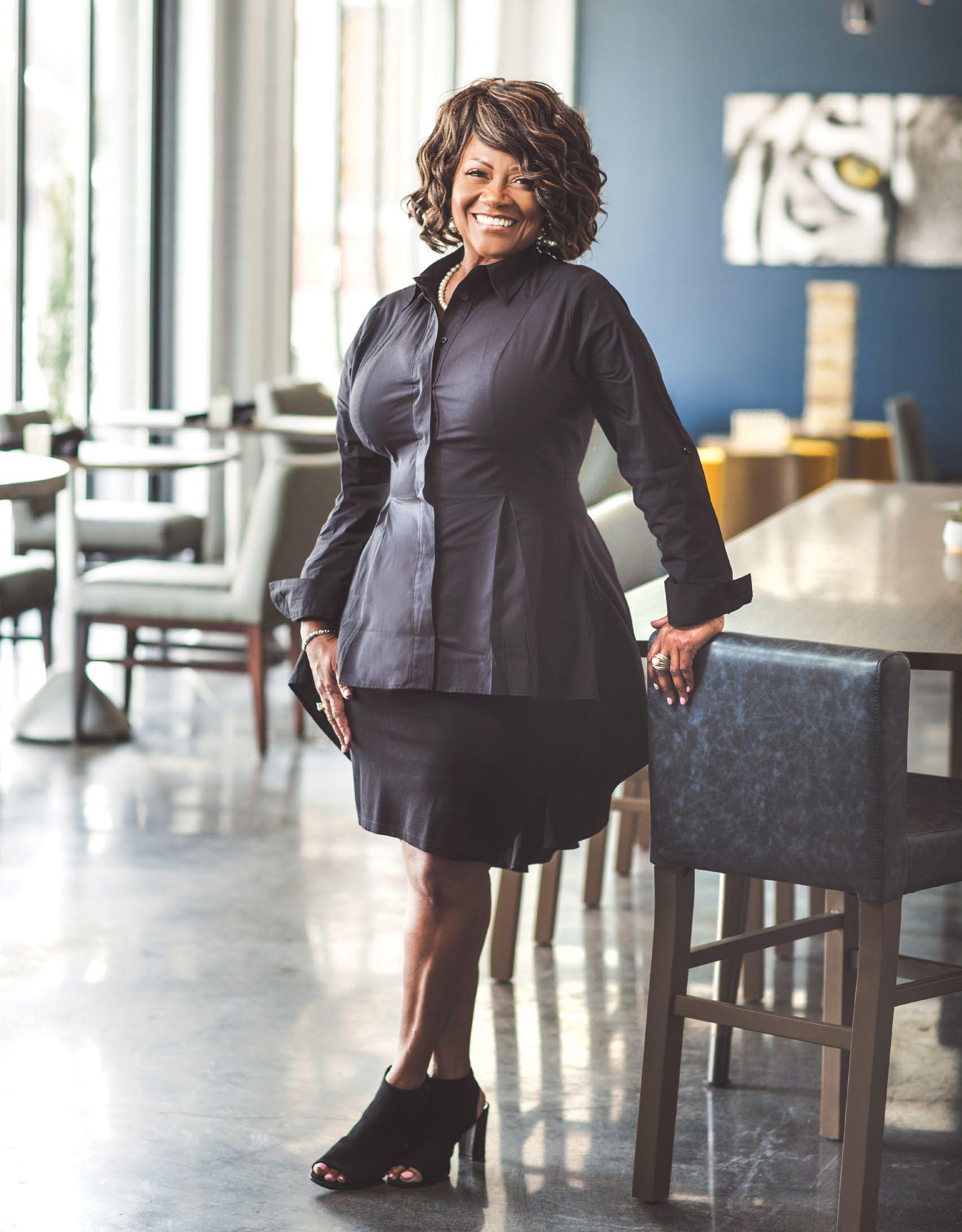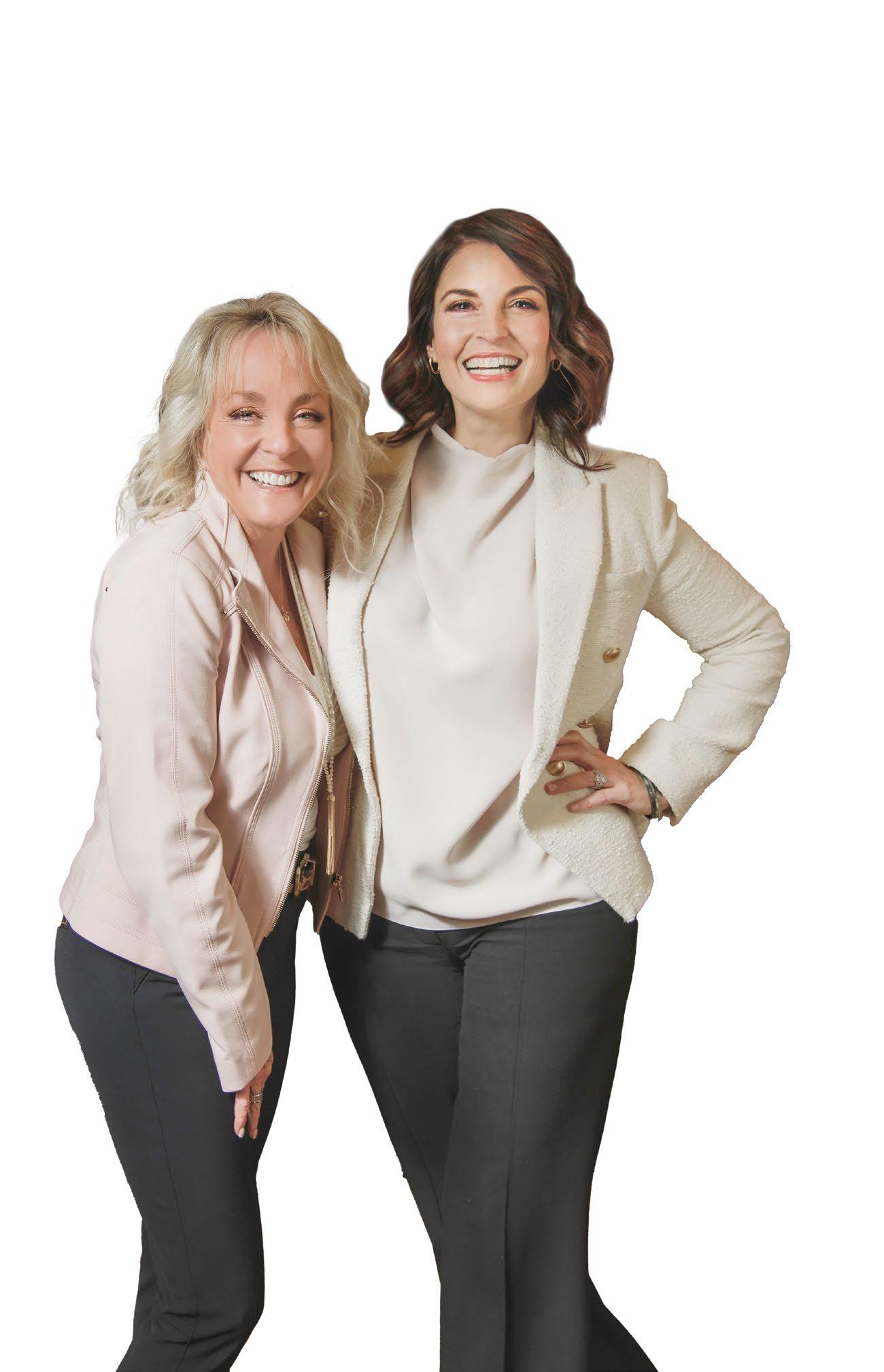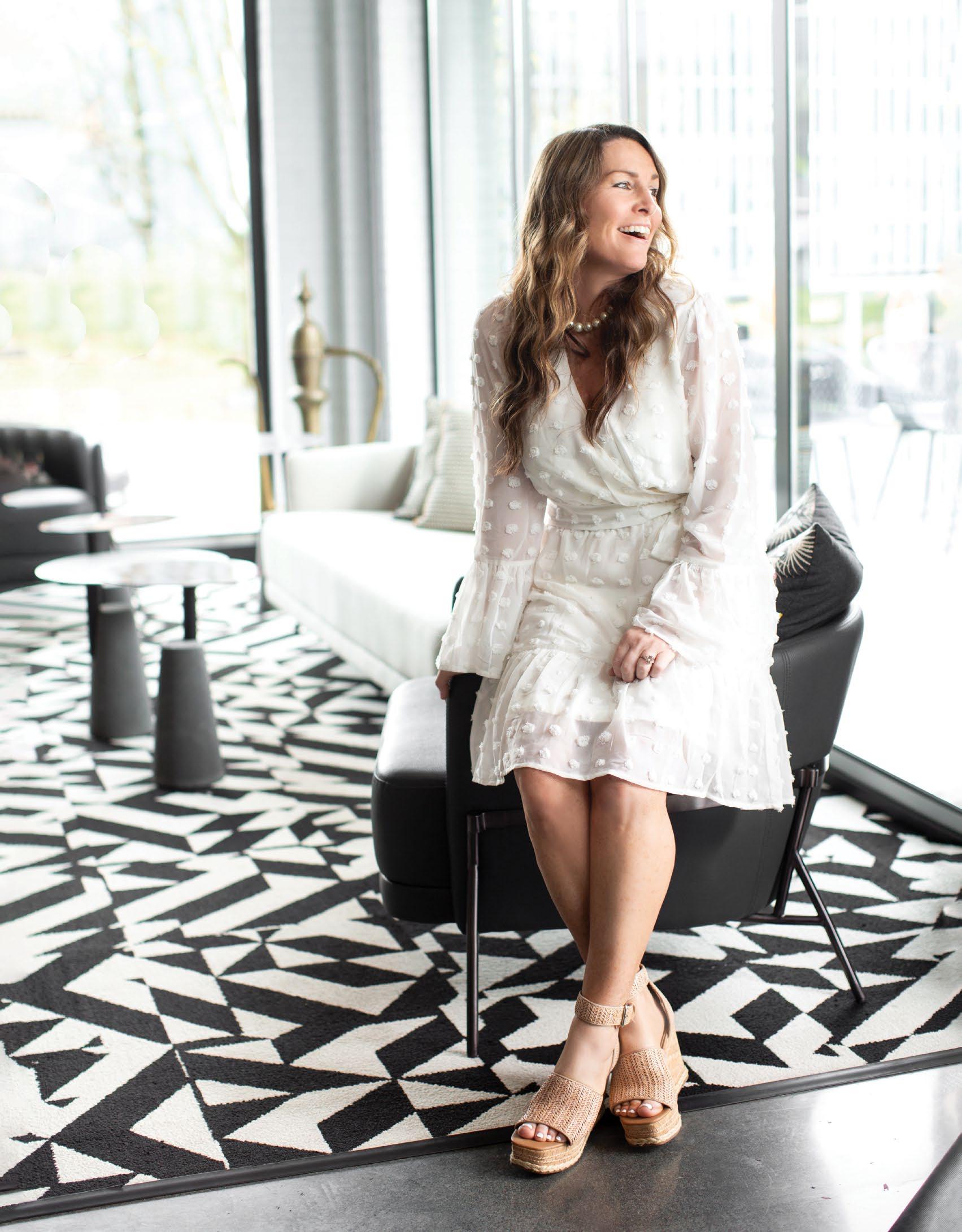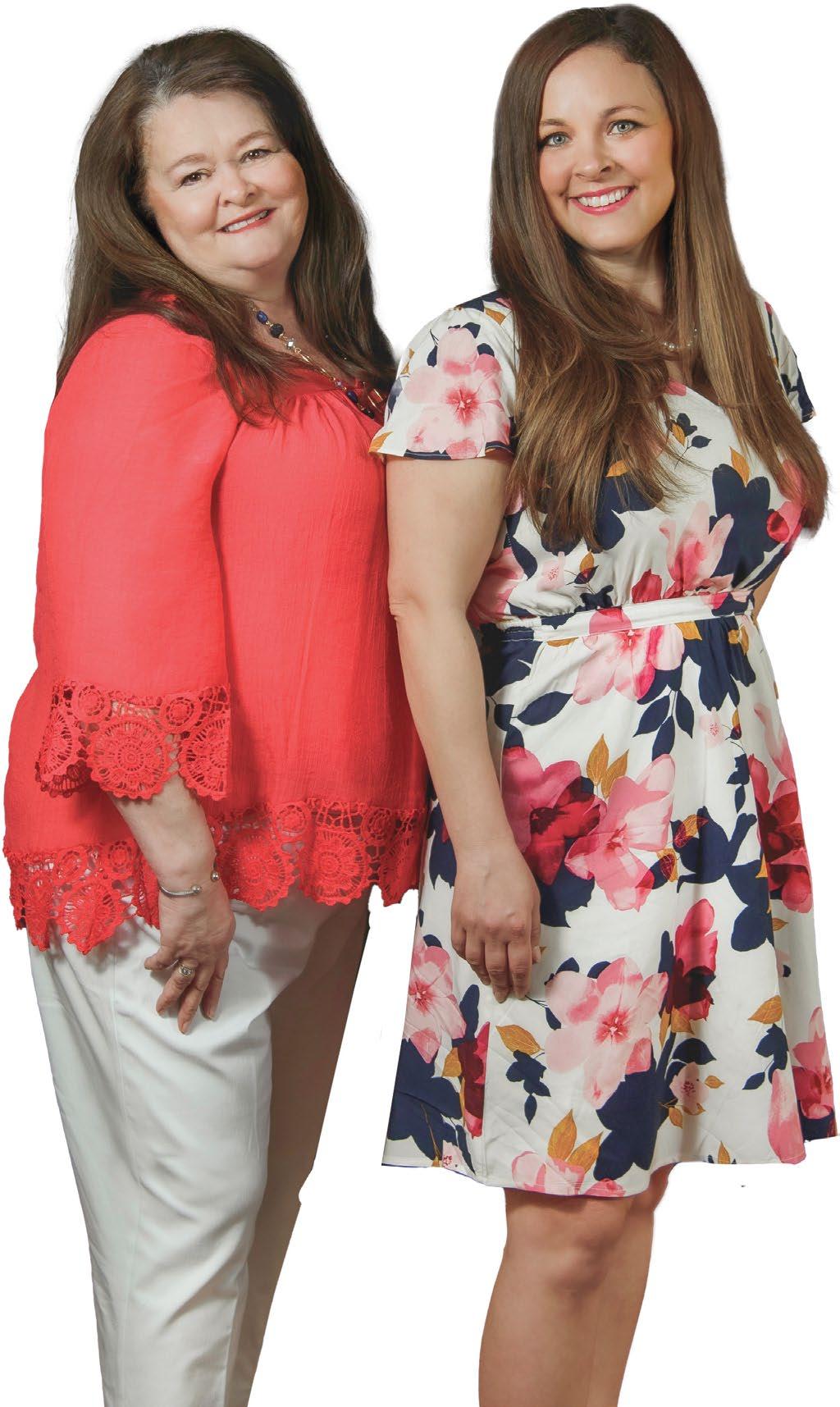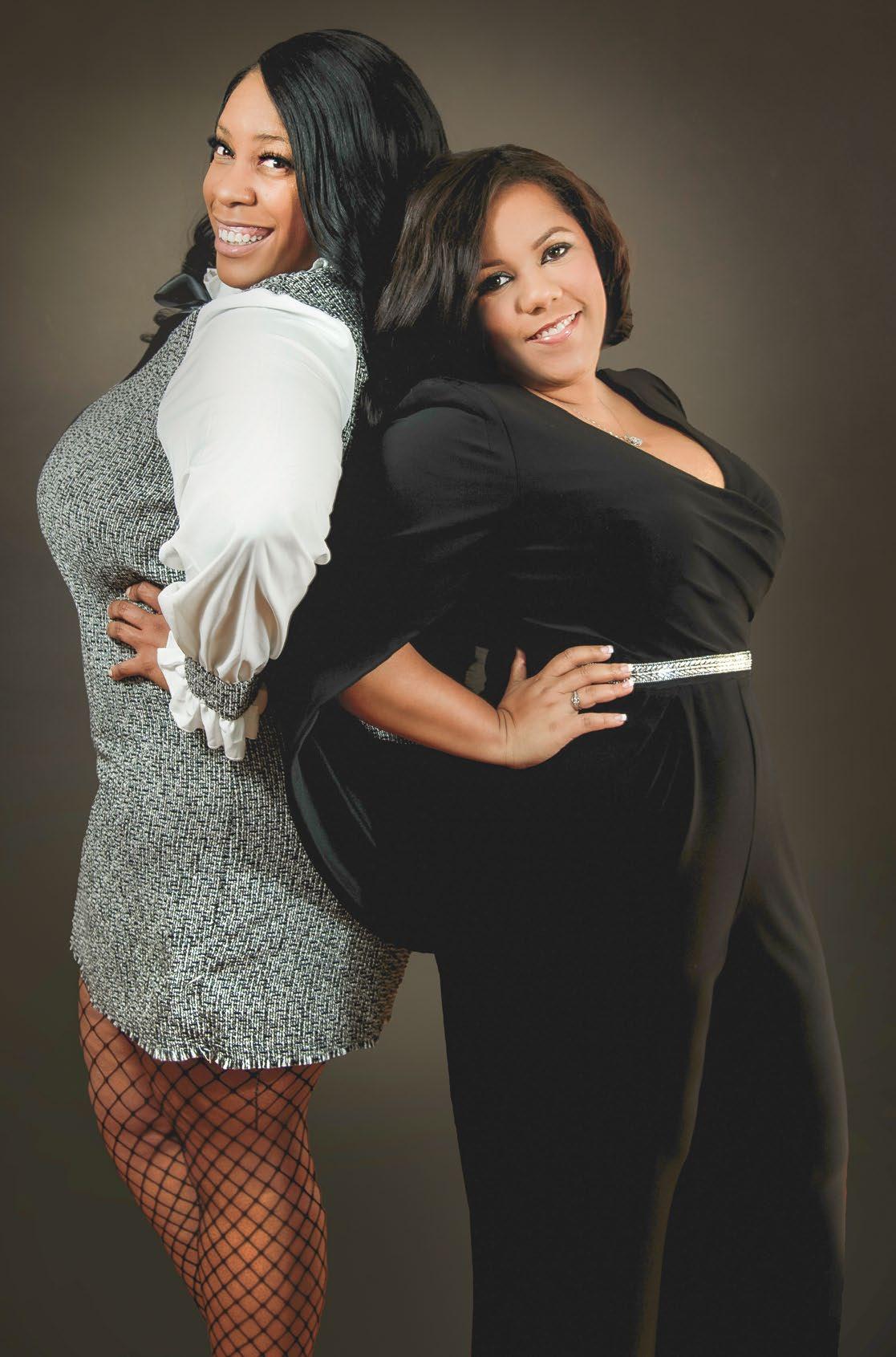
5 minute read
Deanna Duncan
At 43, I almost had it all. I was the CEO of my own hospice company with supportive friends and colleagues, a husband, and two sons who were 6 and 9 years old. I looked forward to the day I could hire more doctors and cut my long hours down.
“You are not aging well, maybe hire a trainer,” my then-husband commented as I struggled to get dressed. My back had been hurting for months, and now I was limping. Routine exams followed. “Dr. Duncan, you have a tiny spot on your mammogram, but it’s so small there’s a 98% cure rate if it’s cancer,” the radiologist said. The bone pain that kept moving around in my back suddenly made sense. Scans revealed cancer eating my bones from my skull to a broken hip. My spine crumbled so much that I stood at 5’10” instead of my usual 6 feet.
“Do. Not. Tell. Anyone,” I said to my husband and every doctor I saw. “I am the face of an over-leveraged new business. We could lose everything if I stop getting referrals!” I feared my family would have nothing when I died in a few years. I came home that night to a large gathering. Referrals dropped as the community learned that I had Stage IV breast cancer. Money flew out the door while I went for daily radiation and planned little boys’ birthday parties.
Friends stepped in – too many angels to name here. They brought dinner almost every night, babysat the boys, paid our bills, and my doctor friends covered for me and helped me sell my company. My brother-in-law even took me to chemo every three weeks for six years. Throughout my struggle, I learned to let go of toxic relationships and expectations of how life should look. Through the newly formed Dr. Deanna Duncan Foundation, I want to share my hope and knowledge of cancer support options with every new cancer diagnosis in the Chattanooga area.
I was told I would be on chemo for life, but after seven years of no signs of active disease, I know that miracles do happen. At 50, I really can say now that I have it all, but my definition has changed. I am healthy, joyful, full of gratitude, and living in peace and harmony with my beautiful teenage boys. HS
Deanna Duncan
SIGNAL MOUNTAIN
Survivor Story
When it comes to heart disease, there is no discrimination. Regardless of lifestyle, race, or age, heart disease can manifest in anyone. Channing Muller knows this all too well, as she had a heart attack at age 26 while training for a half-marathon. What follows is her personal story and a firsthand account of why you should always take signs and symptoms seriously.

Channing Muller
I am not the traditional face of heart disease, yet here I am. In 2011, I woke up after a night of revelry feeling a little worse for wear, but nothing a good sweat session couldn’t fix. I took one step away from my bed, and everything changed in an instant. My heart started racing uncontrollably, and I felt like I needed to vomit.
I broke out into a sweat, lost all color in my face, and all the while, my heart kept racing like I had just finished a marathon, yet I’d only taken 10 steps to the bathroom. After a few failed attempts to release my stomach contents and find a way to get physically comfortable, I started to get scared. As my heart raced, my breathing became irregular, and I knew something was truly wrong. I crawled to the nightstand and called my roommate on the second floor, as shouting from the basement would have been impossible.
She helped me up the stairs, and we headed to a hospital just five blocks away. After 45 minutes of a racing heart, multiple EKGs, and two rounds of blood work, the doctors had a diagnosis: I had experienced a heart attack … at age 26.
After that, I was airlifted to a cardiac care unit at another hospital where I remained for three days of extensive testing before being transferred to a regular hospital room for another three days. The resulting tests showed a 70% blockage in my heart, despite low cholesterol, an active lifestyle, and no indicators as to the origin of the blockage. Due to my age, the doctors chose to take a medicinal route of treatment, and I was sent home to recover with regular cardiologist appointments in my future.
One month later on January 17, 2012 – the day I had planned to start cardiac rehab – I got that racing heart feeling again. Thankfully, my medication kept my heart rate from getting as out of control as it did the first time, so while I did indeed experience a second heart attack, it wasn’t as painful as the first. Nonetheless, I remained in the hospital for another four days. The result: The blockage had worsened to nearly 90%, and a stent had to be placed to keep the artery open and prevent further complications. I did finally go to cardiac rehab, where I became known as “the girl who runs,” aptly encapsulating my singular goal when I arrived: to run again. One year later, my cardiologist confirmed that all the damage to my heart from the two incidents had repaired itself, and other than the placement of my stent, no physical evidence remains.
Today, nearly 10 years later, I proudly identify as a heart attack survivor and half-marathoner.
The American Heart Association is dedicated to building healthy lives, free of cardiovascular disease and stroke, through education, caregiver support, research, and development of health care professionals. Go Red for Women is a social initiative designed to empower women to take charge of their heart health by equipping them with the knowledge necessary to lead healthy lives with healthy hearts.
Women Celebrating Women
The word inspire is defined as the act of filling someone with the urge or ability to do something, and here in Chattanooga, we have no shortage of incredible women who motivate those around them day in and day out. Whether they intentionally set out to be a role model or random acts of kindness are simply in their DNA, these women are making the world a better place. Read on to learn more about the individuals who encourage others to be the best version of themselves, told by those they inspired most.
PHOTOGRAPHY BY EMILY PÉREZ LONG


